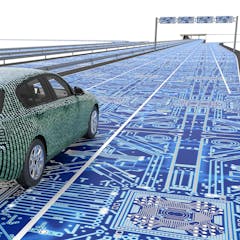
Articles on Pedestrian safety
Displaying all articles

The city of Accra has no plan to tackle pedestrians’ behaviour.

Some councils have installed zebra crossings at selected T-intersections, where they do improve safety. The problem is they also add to the existing confusion at other intersections.

The controversial cars are under attack.

While the road toll has come down over the decades, it’s largely a result of fewer car occupants dying. Pedestrian deaths have barely changed for a decade, but they remain a road safety blind spot.

First trains, then cars and, now, COVID-19 have all spurred New York to reimagine how its scarce space should be used – and what residents need to survive.

Most people do not know the right-of-way rules, but a starting point should be that pedestrian needs and safety take priority. Current road rules are biased towards driver convenience

How will people respond once they realise they can rely on autonomous vehicles to stop whenever someone steps out in front of them? Human behaviour might stand in the way of the promised ‘autopia’.

The debate over the place of cars in cities may seem recent, but pamphlets published during the French Revolution show that the battle was raging before the first automobile even saw the light of day.

Autonomous cars and people-centered communities are mutually exclusive, writes a cyclist and transportation scholar.

Electric rideables are making life less comfortable and more dangerous for pedestrians. Here’s how makers of rideables could help make cities safer for everybody.

A lecturer in transport engineering weighs in on one of the greatest debates of our time.

Collisions at intersections between motor vehicles, cyclists and pedestrians cause many deaths and injuries. Design that considers how each group approaches intersections improves everyone’s safety.

In the wake of a self-driving Uber car killing a pedestrian in Arizona, an ethicist examines the state of autonomous vehicle development.

The Flinders Street incident, in which a car was driven into pedestrians on a busy Melbourne street, underscores the need for new ways to design cities to protect pedestrians from vehicle attacks.

It’s time to turn Oxford Street into a haven for walkers.

Driver aid systems and self-driving vehicle control systems could override a driver who is trying to attack people and prevent tragedy.

The clock change’s impact on commuter numbers highlights the need to use street lighting more effectively.

If all the elements in the transportation system are going to talk to each other, the people at the companies and government agencies that make those items need to talk to each other too.

The golden rule of shared paths is that the person in the less vulnerable position should be mindful of the more vulnerable user.

In contrast to increases in vehicle safety over the decades, we have seen little new technology to ensure the safety of pedestrians – and current innovations are still based on a car-centric approach.
